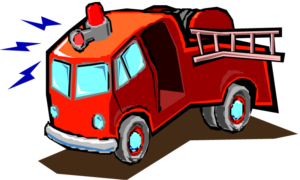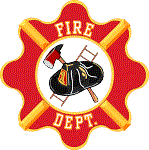FIRE GROUND SIZE-UP

Fire Officer Series
Course Syllabus for all seminars
SITUATIONAL AWARENESS for the Engine – Truck and Chief
Fire Ground Size-Up, or the lack of it, is a consistent series of factors that leads to the success or failure of an emergency incident. Touted as one of our most popular programs, this seminar is a 6-hour (full day) seminar designed to enhance your anticipative skills.
This seminar is a MUST for every current or future fire officer!
This program is based on the NEW text, Fire Ground Size-Up, 2nd. edition.
Course Competencies: In a manner deemed appropriate by the instructor, students will be able to:
* Understand how we make decisions.
* Recognize the Pre-incident Information Need. (PIN)
* Utilize alarm transmission information and on-scene reports to recognize as well as identify the challenges.
* Understand and identify building construction, occupancy, and height cues and their influence on your decision making.
* Recognize how resource and response capabilities can affect your operations.
* Assess structural involvement.
* Further recognize how the location of the fire influence tactics.
* Assess the Occupant life hazard and your decision to search, rescue and remove.
* Utilize IMS with “the radio” to enhance scene management and accountability.
* Recognize how time plays a critical role in your decision making.

FIRE GROUND SIZE UP – Occupancy based series
This NEW educational series identifies the different responsibilities for the Engine, Ladder and Chief as they arrive and go to work at the different type occupancies listed.
Each of the listed occupancy/buildings is presented as 3 or 6 -hour program depending on the occupancy(s) you choose. These programs are based on the NEW text, Fire Ground Size-Up, 2nd. edition. Class examples include:
* Private Dwellings
* Multiple Dwellings
* Row frames and Brownstones
* Taxpayers and Strip Malls
* Warehouses, Factories and Loft Buildings
* Garden Apartments and Townhouses
* Churches
* Residential and Commercial Office High-Rises
* High-Rise Buildings Under Construction
* Vacant Structures
Course Competencies: Students will be able to:
* Identify Fire Ground Size-Up responsibilities for effective decision making.
* Identify hose line selection, stretch and placement responsibilities.
* Understand the tools and tactics necessary for timed vent and search techniques.
* Utilize a practical approach to scene management and control.

TRANSITIONAL ATTACK – NOT ALWAYS! This 3-hour program reviews the NIST and UL information regarding TRANSITIONAL FIRE ATTACK and presents information that you NEED to KNOW before you “hit it hard from the yard.” Do not miss this information!
Course Competencies: In a manner deemed appropriate by the instructor, students will be able to:
* Identify what is being said and why.
* Review the NIST/UL information.
* Identify the positive and negative aspects of the information.
* Identify the common-sense approach.
* Understand how to merge “science based” with “experience based” information.
* Identify when used and when not used.
* Provide additional methods to improve the efficiency, effectiveness, and safety of your fire ground operations.
OPERATIONS in LIGHT-WEIGHT designed BUILDINGS: This is a 3-hour comprehensive review of the Size-Up factors necessary for a safe operation in and around structures constructed with Light-Weight components. From understanding building design to fire behavior and fire department operations; the material presented in this program is critical to getting everyone home.
Course Competencies: Students will be able to:
* Identify the different Lightweight building materials being used.
* Discuss the reasons for their increased use in the building construction industry.
* Identify the decision-making challenges.
* Identify fire behavior and collapse characteristics of Light-Weight building materials.
* Establish an identification/awareness program for their departments.
* Develop an operating guideline for fires in Lightweight designed buildings.
“HOARDING” and Fire Department Operations: This concern is NOT limited to urban firefighting. Fire Departments from rural, suburban, and urban areas need to be aware of the concerns and how to effectively and safely operate in buildings full of accumulated items. Identified as one of the “most dangerous buildings we can enter into,” this 3 -hour program is designed to prepare you for the unexpected.
Course Competencies: Students will be able to:
* Understand why this occurs and buildings where this exists.
* Conduct a risk assessment at incidents.
* Recognize the challenge of increased fuel loads and rapid-fire growth.
* Identify the concerns and challenges with fire ground operations.
* Identify the challenges with victim removal and how to overcome it.
* Identify the concerns with structural collapse.
* Recognize the need to decontaminate members after the operation.
* When the situation allows, how to provide Customer Service help.
MAY-DAY/URGENT Radio guidelines and Procedures: This is a three-hour program designed to establish procedure with your members for a MAY-DAY or URGENT radio transmission. In this seminar we will identify the difficulties, the parameters, the difference between the messages, as well as when and how to transmit a message. Using actual case studies, we will present your department with a model SOP for a realistic approach to this subject.
Course Competencies: Students will be able to:
* Overcome the negative stigma with transmitting a MAY- DAY message.
* Review actual case studies and the challenges presented and overcome.
* Explain the difference between an URGENT and MAY- DAY message.
* Identify the parameters for each message.
* Follow a simple guide/acronym for each term.
* Identify use with sample/mock exercises.
COMMAND and CONTROL through use of the F.D. RADIO: This is a 3-hour comprehensive program that focuses on a uniformed/informative and disciplined approach toward scene management and control through use of the FD radio. In this seminar we provide you with a scripted outline for the initial radio report, the alarm status report, and the incident scene progress report. Additionally, we will focus on identifying building construction, floor/occupancy designation, and the discipline needed in your radio use. By reviewing actual radio transmission clips and case studies, we will provide your department with a uniformed approach on what to say, how to say it and how it should impact your fire ground operations.
Course Competencies: In a manner deemed appropriate by the instructor, students will be able to:
* Identify the value and purpose of a uniformed, informative, and disciplined use of the Fire Department radio.
* Provide a scripted and informative “initial radio report.”
* Provide and define the objective of an “alarm status report.”
* Provide and define the objective of an “incident scene progress report.”
* Follow a uniformed approach on “what to say” and “how to say it.”

Development and Use of Fire Ground Tactical/Command Boards: This three-hour lecture/demonstration will take the student through the design and use of a Tactical Worksheet and Command Tracking Board. Students will be able to apply tactical worksheets through a series of mock fireground scenarios utilizing their own department’s resources.
Course Competencies: In a manner deemed appropriate by the instructor, students will be able to:
* Understand and be able to apply management terms based on incident size and complexity.
* Assess/track assigned and responding units.
* Recognize span of control challenges.
* Decentralize an incident.
* Assign and track resources utilizing a work sheet and Command board.
STRUCTURAL COLLAPSE: This 3 – hour program reviews the different classes of construction and the inherent occupancies where collapse is most probable. In this seminar we will discuss the different types of construction with the fire spread and collapse concerns for each. Through several case studies and video footage, we provide each student with an “anticipative guide” to protect their members.
Course Competencies: In a manner deemed appropriate by the instructor, students will be able to:
* Identify the 6 different classes of construction.
* Recognize the fire spread and collapse concerns for each.
* Identify the inherent challenges within each construction/occupancy.
* Establish a list of collapse indicators for the fire officer.
* Through a series of mock exercises, identify the concerns before collapse occurs.
Seminar Information:
Contact us at (973)726-9538 or firegroundsizeupmt@gmail.com

SUGGESTED TEXT BOOKS:
* Fire Ground Size -Up, 2nd. edition: DC M. Terpak – Jersey City
* Fire Officer Oral Assessment Study Guides: Promotional Prep
* Assessment Center Strategy and Tactics: DC M. Terpak – Jersey City
* Assessment Center Management and Supervision:
DC M. Terpak – Jersey City
COD F. Montagne – North Hudson
* Promotional Prep, Fire Officer Study Guides: DC M. Terpak – Jersey City
COD F. Montagne – North Hudson
* Fire Ground Operational Guides: DC F. Viscuso- Kearny NJ, DC M. Terpak Jersey City
WEB-SITES:
* promotionalprep.com
* firegroundsizeup.com
FACE BOOK:
* facebook.com / Promotional Prep
* facebook.com/ Mike Terpak Fire Training and Consulting
INSTAGRAM:
@MikeTerpak
